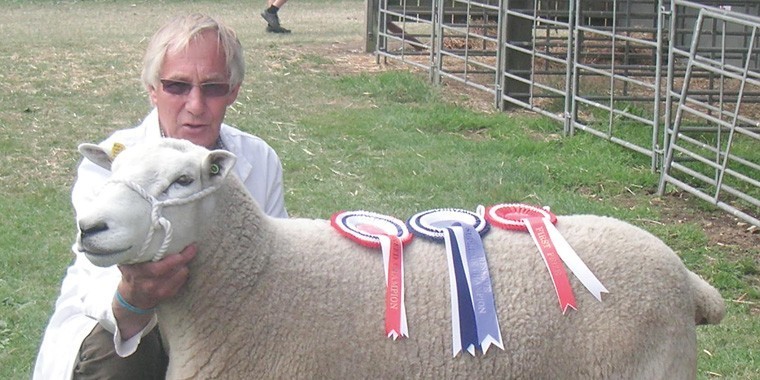We have gone from the situation in the back end when grass supplies were so abundant that, for many producers, it was a struggle to prevent ewes getting too fat, to the point now where sheep are being turned out with lambs at foot, on to less than adequate grass supplies, just when we need that spring grass to put some milk under the ewes. The grass is just bursting to grow: after a nice sunny day it perks up beautifully only to be knocked back again after a cold frosty night. Soil temperatures are creeping up and were 10 degree scentigrade last Monday (14 March), which should be warm enough for things to start moving, but the cold nights are just proving too much of a barrier.
It’s a good thing that the ewes are carrying a bit of condition. They have got some scope to milk off their backs, but I suspect that many producers will be feeding a bit of concentrate when ewes are turned out, simply to put that bit of protein into their diet that is so important for milk production and lamb growth.
With a good wedge of winter grass lasting well into February I was certainly able to save quite a lot on concentrate feeding before lambing, with no adverse effects. The lambs born to date have all been of an excellent birth weight and have almost hit the ground running – up, suckling and following their mums in no time at all; and the mums seem to be even more fiercely maternal this year than normal. My dog will certainly testify to that: she has very quickly learnt that the wise thing to do, when I am walking up to a ewe and her lambs from the lambing paddock, is to keep very well out of the way.
On the subject of dogs it is great shame that ewes and, sheep in general, are not quite so fierce more often. The worrying of sheep by dogs is, sadly, on the increase and has been for a number of years. I really do feel for the sheep producer in West Dean who lost 116 sheep in what was almost certainly a dog attack and I’m sure other sheep keepers would express the same sentiment. It is not just the loss of the sheep, sheep that you have nurtured and known, nor the loss of the genetics, so important in a closed flock: it is far deeper than that.
I feel that I have been relatively lucky in as much as I have only ever had a handful of sheep killed by dogs. But what I have seen over the past few years is a significant increase in the number of “minor” sheep worrying incidents and by “minor” I mean incidents where there has been no significant physical harm done to the sheep.
But every sheep worrying incident is serious. The margin between a dog having “a bit of fun and a chase” and a sheep being severely injured or killed is extremely narrow, a fact that most dog owners seem to find very difficult to accept. The most frequent response that I seem to get from the owners of dogs I’ve caught bothering my sheep is “but he/she was only playing, he/she wouldn’t hurt them.”
The last sheep casualty I had as a result of a dog attack was a lovely 15 month old ewe teg, bitten once on the back of the neck by a nine year old rather overweight Golden Retriever bitch, a family pet with no history of sheep worrying who had wandered off and had been missing for just 10 minutes. She might have been having a bit of fun, but I’m absolutely certain that the sheep didn’t think that it was fun, particularly in the last few moments before it was killed.
I’m not sure what the answer is to the problem. Shooting dogs, banning all dogs from fields with sheep, better enforcement, and harsher penalties, educating the public? The two former tend to be a bit divisive serving only to drive wedges between farmers and dog owners. Effective enforcement is a bit of a pipe dream. Harsher penalties absolutely, but I suspect that the solution lies in a combination of all of these, probably a solution that is very heavy on the latter.
In the long run an effective solution must be self policing, which can only come about once we agree that allowing your dog to worry sheep becomes absolutely socially unacceptable. As an industry we need to encourage dog owners to face up to the reality of the damage that any of their dogs can potentially, inflict. And we shouldn’t be too concerned about using graphic images, which may upset some people, if that is what it requires to get the message across.




